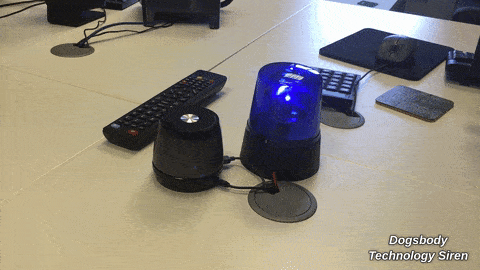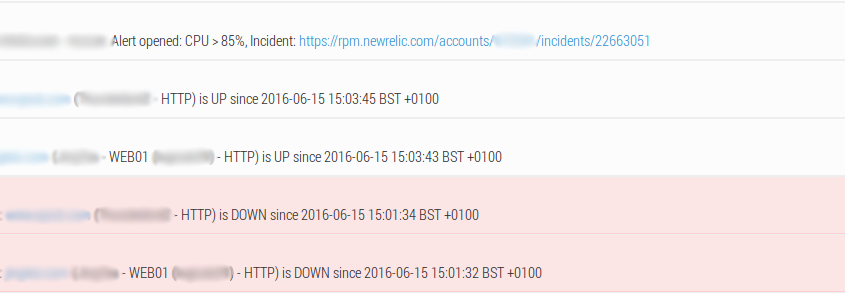Alerts & Webhooks with AWS Lambda
Here at Dogsbody Technology we monitor servers and services for hundreds of clients, you may have read our previous blog post talking about our Warboard and how we make use of it. This blog post covers the other tools we use for responding to incidents and issues real time, our Dogsbody Technology Webhooks.
The main thing we use the webhooks for are Pingdom, Newrelic & Sirportly alerts. When an incident is triggered in Pingdom or Newrelic they will make an API call to our webhook with the relevant information we require to investigate an incident, the webhook will then determine the priority of the incident and send an alert to our Pushover user accounts so we are alerted and can respond to the incident.
High priority alerts, such as site outages also trigger a rotating blue police style light which is accompanied by a siren sound from the office speaker.

The Dogsbody Technology office siren
We also use the webhooks to notify a user when certain interactions happen in our ticketing system Sirportly, such as being assigned a new ticket or when one of their existing tickets is replied to.
To ensure our webhooks would have near to 100% uptime and we wouldn’t miss an alert, we decided the best place to host them would be using AWS Lambda & AWS API Gateway. These two services combined allow us to run the webhooks with Amazon’s high availability infrastructure while only paying small amounts on a per request/alert basis, which is the perfect type of model for this service.
To put into perspective how cost effective AWS’ pricing model for our alerts is, last month (June 2016) we received 25,282 alerts for all of our endpoints combined. This worked out at a total monthly cost of … $0.10! AWS actually provide you with a free amount of lambda execution time per month which we haven’t even reached yet, we’re only getting charged that 10 cents for the API Gateway.
Let us know if you find any of the services and technologies mentioned above interesting and we can write some more in-depth blog posts on those subjects, and even some guides on using them. The alerts talked about in this blog post come with the majority of our server monitoring packages, so be sure to get in contact if you need any of our services.

